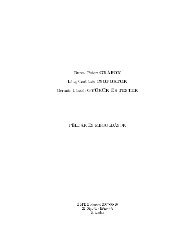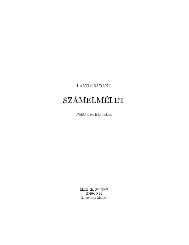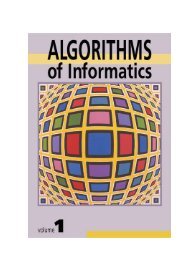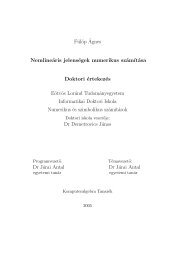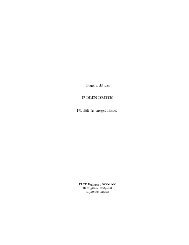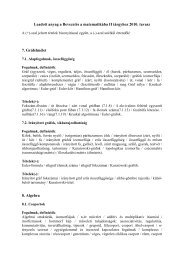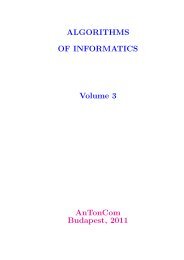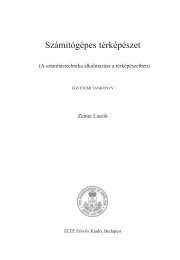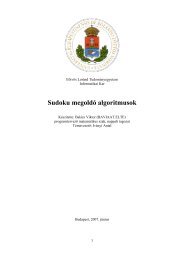On Erd˝os-Gallai and Havel-Hakimi algorithms
On Erd˝os-Gallai and Havel-Hakimi algorithms
On Erd˝os-Gallai and Havel-Hakimi algorithms
Create successful ePaper yourself
Turn your PDF publications into a flip-book with our unique Google optimized e-Paper software.
4 A. Iványi, L. Lucz, T. F. Móri, P. Sótér<br />
Proof. See [9, 26, 28, 37]. <br />
If we write a recursive program based on this theorem, then according to<br />
the RAM model of computation its running time will in worst case Ω(n 2 ),<br />
since the algorithm decreases the degrees by one, <strong>and</strong> e.g. if b = ((n − 1) n ),<br />
then the sum of the elements of b equals to Θ(n 2 ). It is worth to remark that<br />
the proof of the theorem is constructive, <strong>and</strong> the algorithm based on the proof<br />
not only tests the input in quadratic time, but also construct a corresponding<br />
simple graph (of course, only if it there exists).<br />
It is worth to remark that the algorithm was extended to directed graphs<br />
in which any pair of the vertices is connected with at least a ≥ 0 <strong>and</strong> at most<br />
b ≥ a edges [30, 31]. The special case a = b = 1 was reproved in [23].<br />
In 1965 <strong>Hakimi</strong> [27] gave a necessary <strong>and</strong> sufficient condition for two sequences<br />
a = (a1, . . . , an) <strong>and</strong> b = (b1, . . . , bn) to be the in-degree sequences<br />
<strong>and</strong> out-degree sequence of a directed multigraph without loops.<br />
2.2 Erdős-<strong>Gallai</strong> algorithm<br />
In chronological order the next result is the necessary <strong>and</strong> sufficient theorem<br />
published by Pál Erdős <strong>and</strong> Tibor <strong>Gallai</strong> [21].<br />
For an n-regular sequence b = (b1, . . . , bn) let Hi = b1 + · · · + bi. For given<br />
i the elements b1, . . . , bi are called the head of b, belonging to i, while the<br />
elements bi+1, . . . , bn are called the tail of b belonging to i.<br />
When we investigate the realizability of a sequence, a natural observation is<br />
that the degree requirement Hi of a head is covered partially with inner <strong>and</strong><br />
partially with outer degrees (with edges among the vertices of the head, resp.<br />
with edges, connecting a vertex of the head <strong>and</strong> a vertex of the tail). This<br />
observation is formalized by the following Erdős-<strong>Gallai</strong> theorem.<br />
Theorem 2 (Erdős, <strong>Gallai</strong> [21]) Let n ≥ 3. The n-regular sequence b =<br />
(b1, . . . , bn) is n-graphical if <strong>and</strong> only if<br />
<strong>and</strong><br />
j<br />
bi ≤ j(j − 1) +<br />
i=1<br />
n<br />
bi even (1)<br />
i=1<br />
n<br />
k=j+1<br />
min(j, bk) (j = 1, . . . , n − 1). (2)<br />
Proof. See [9, 15, 21, 71, 85].



